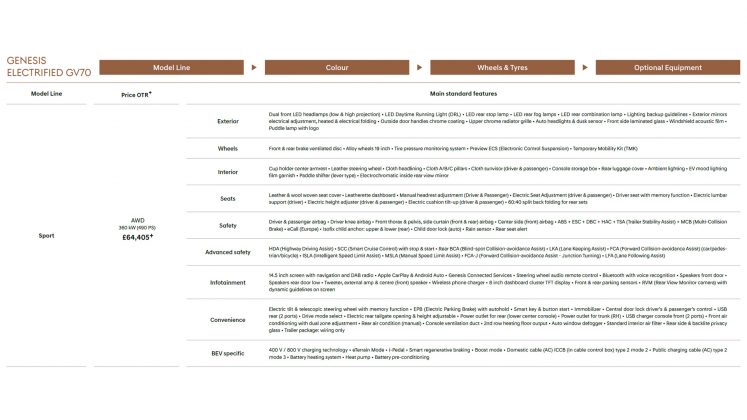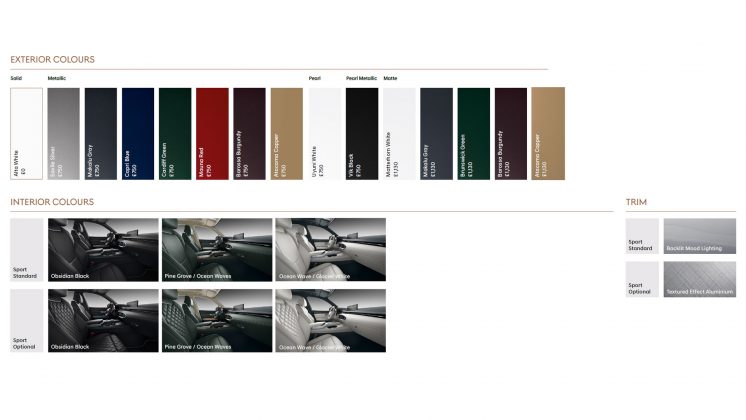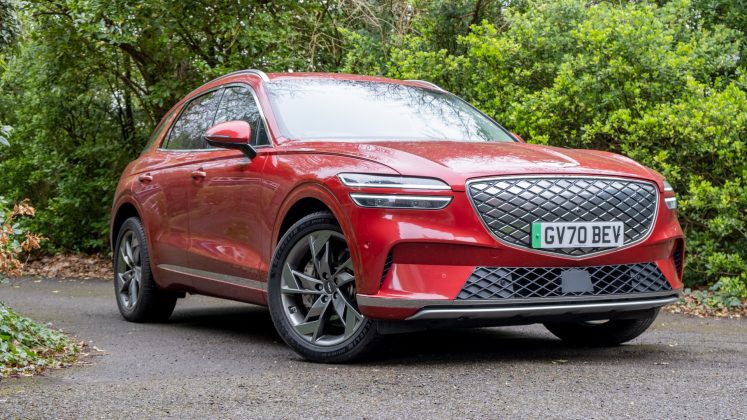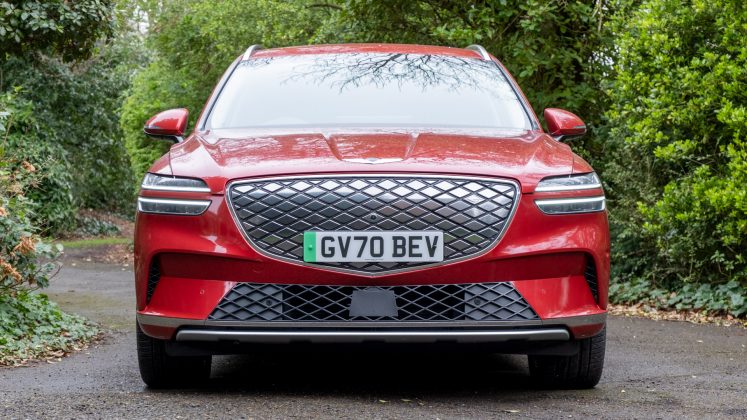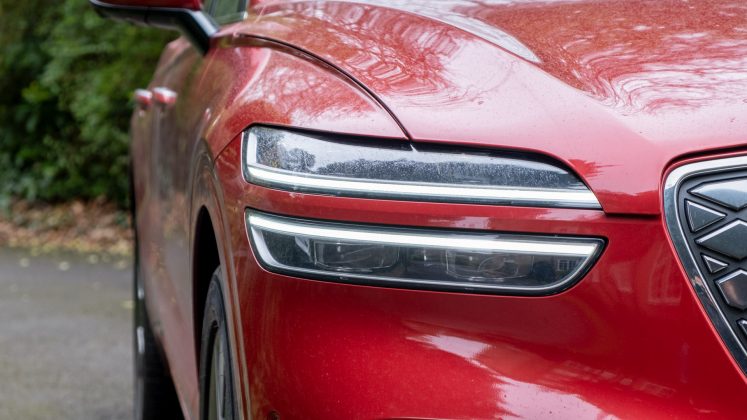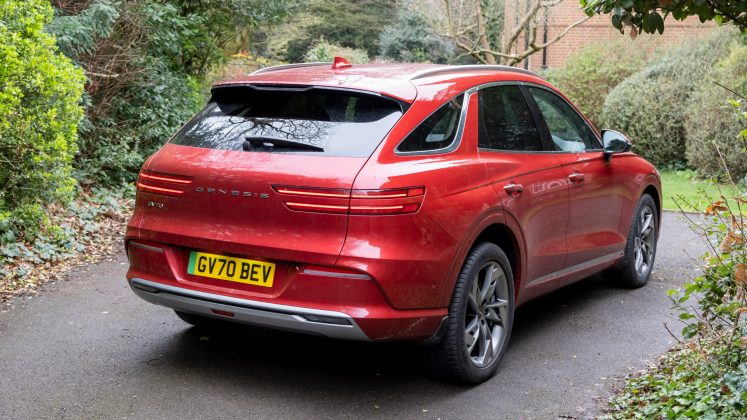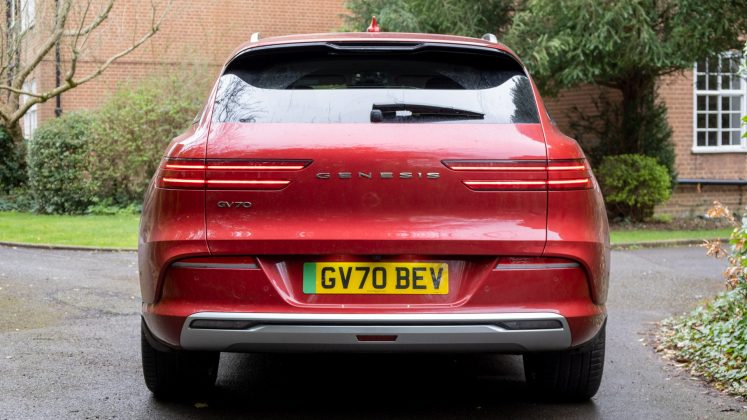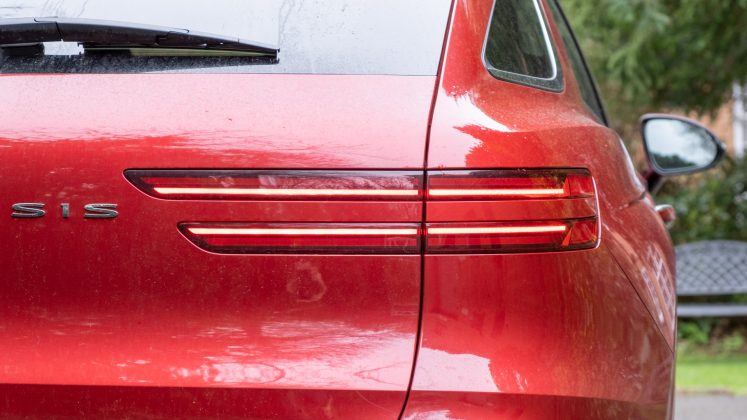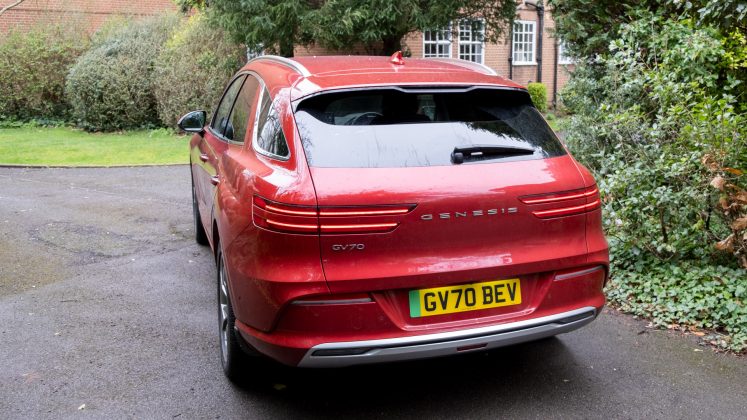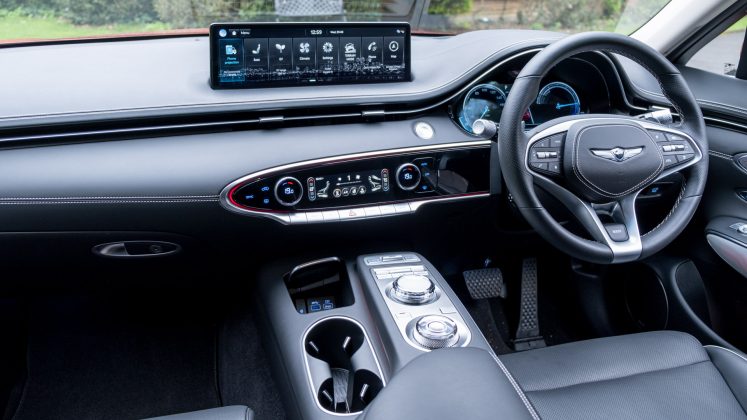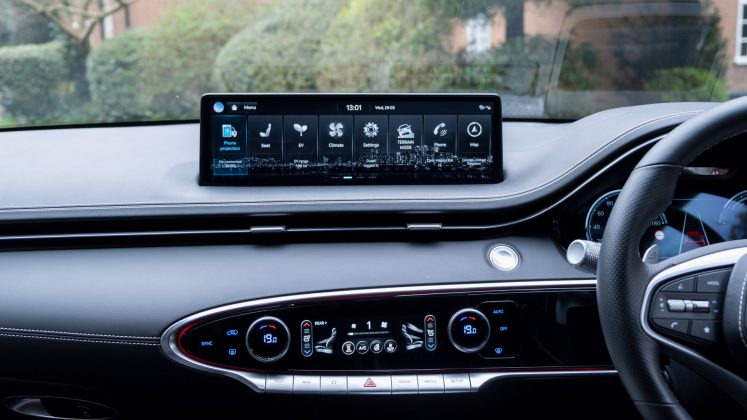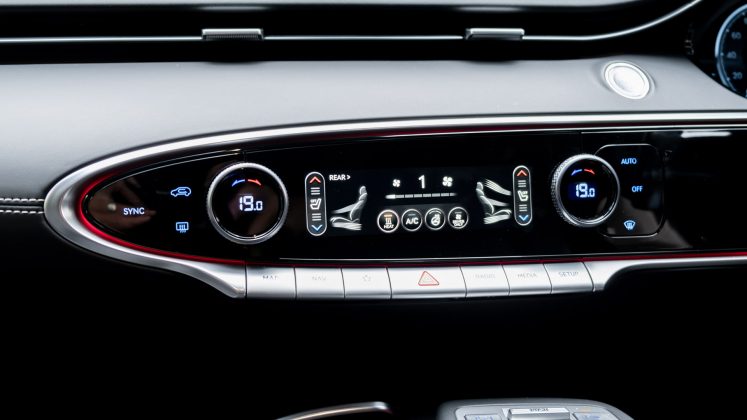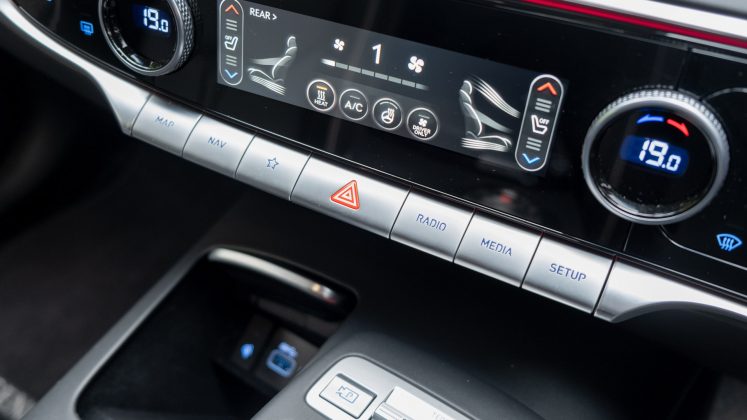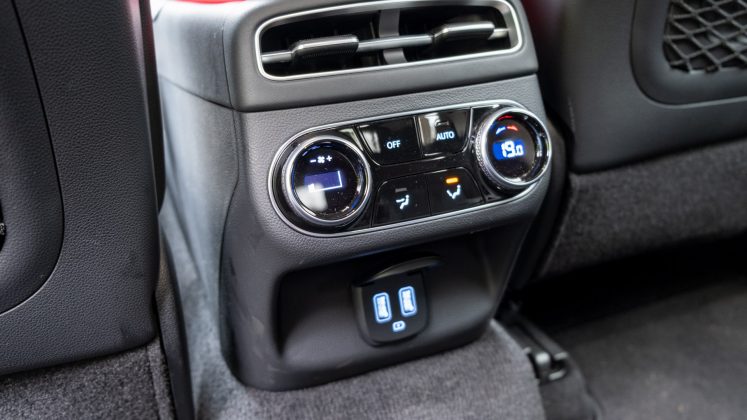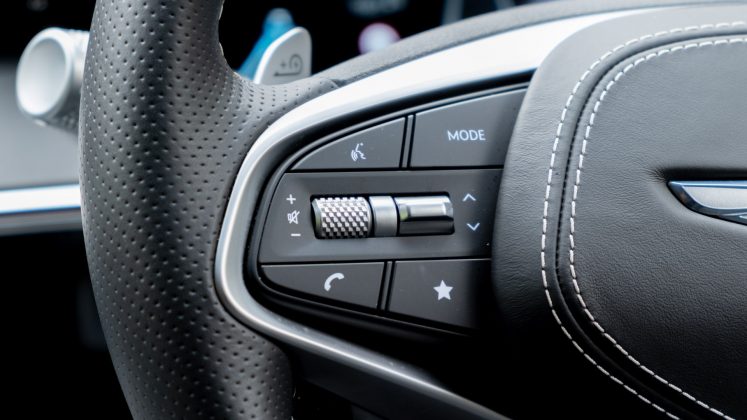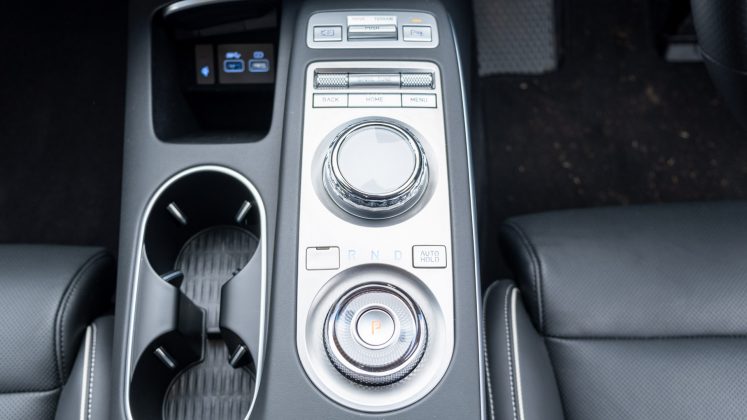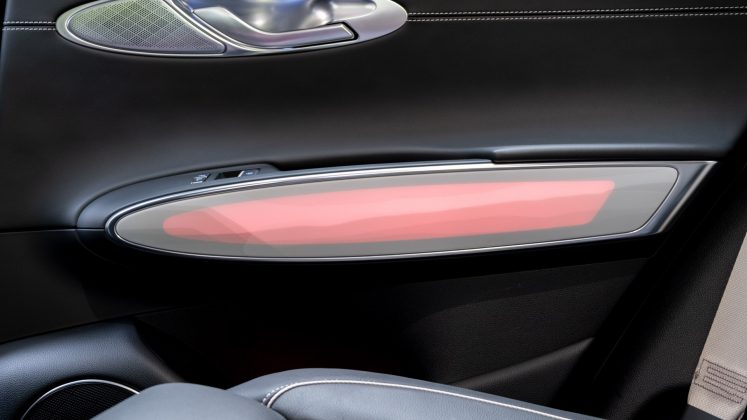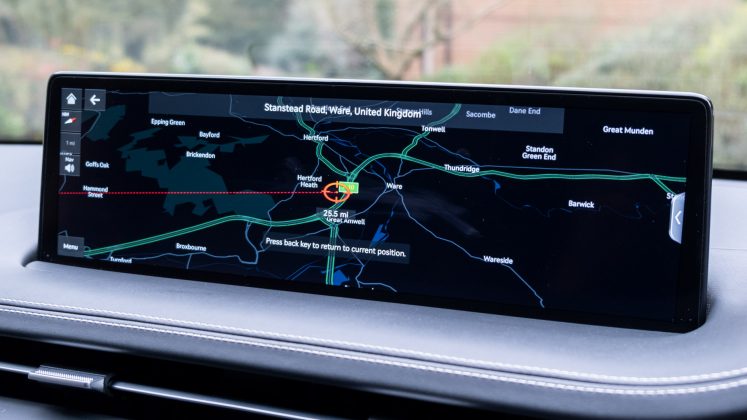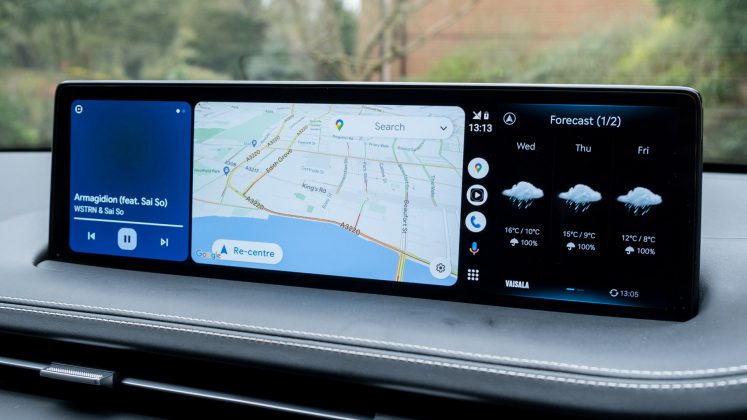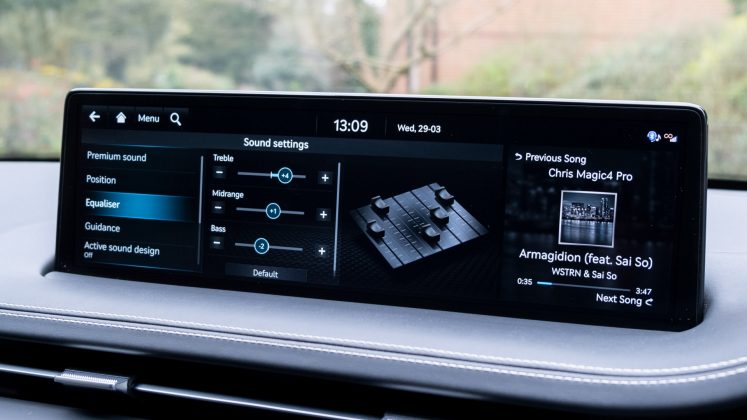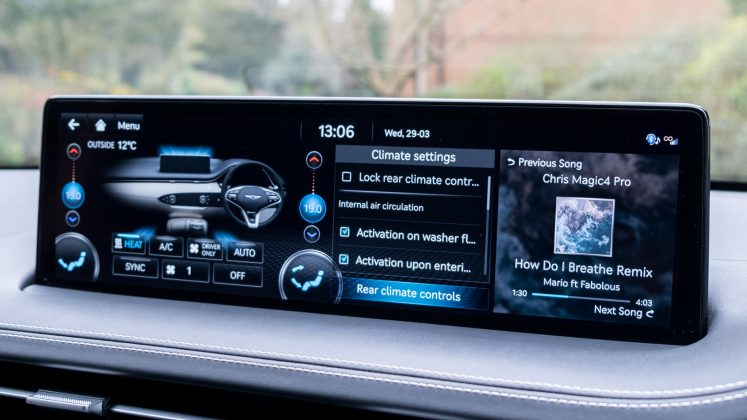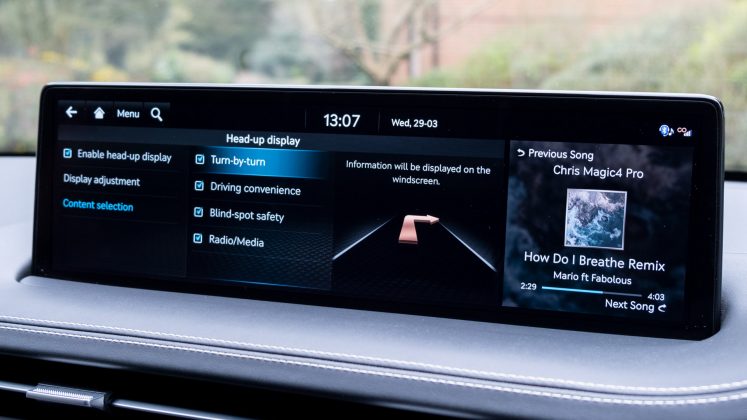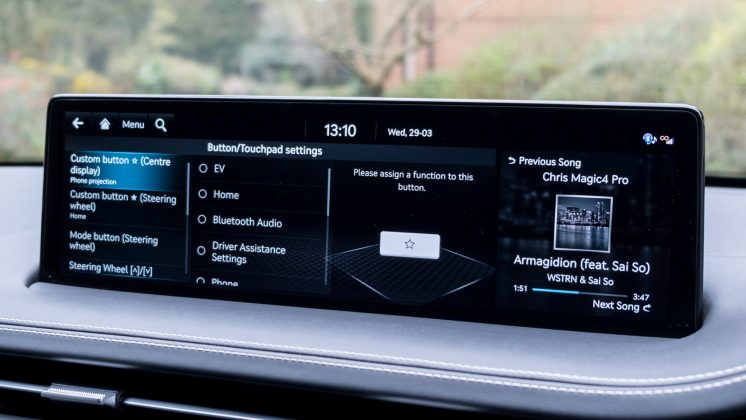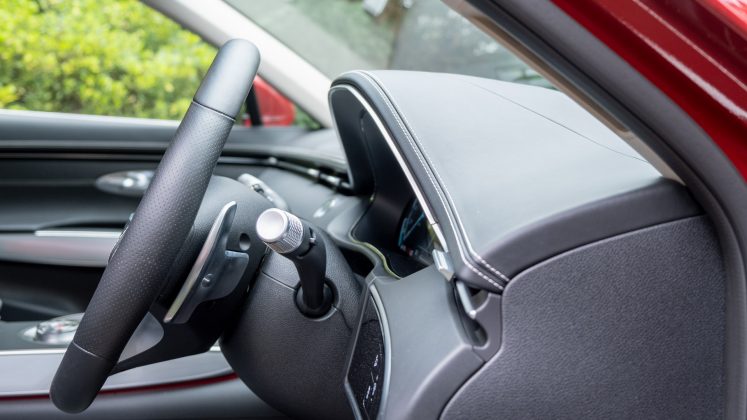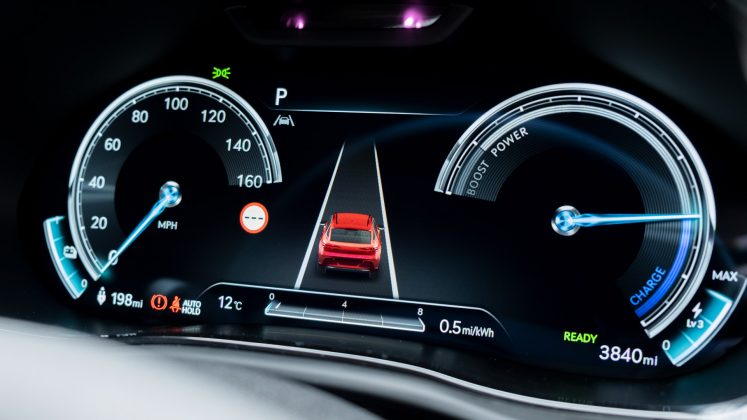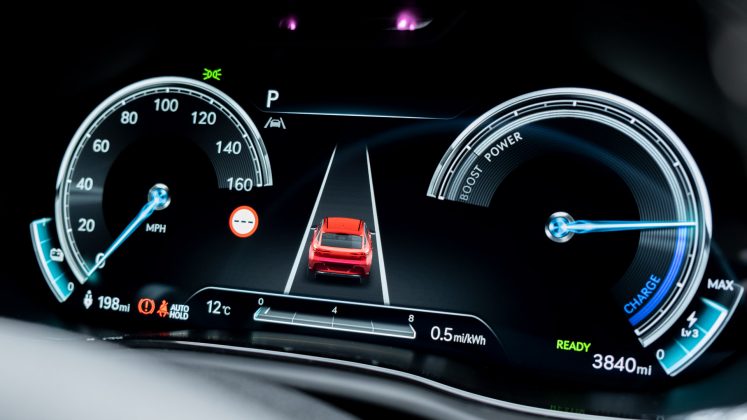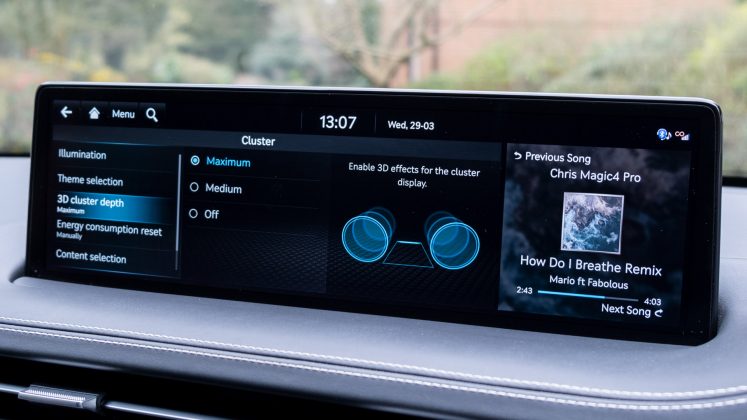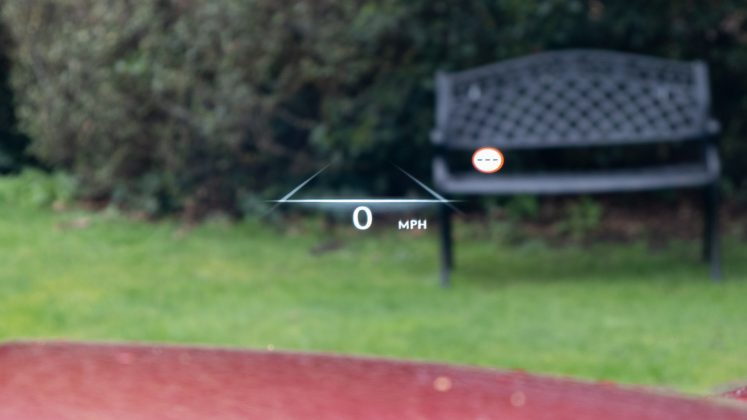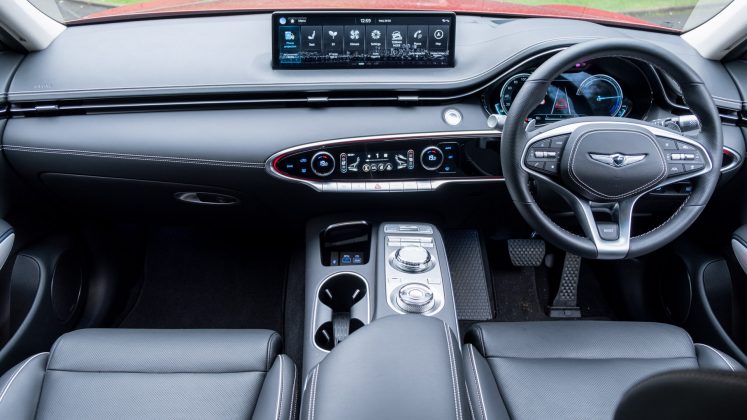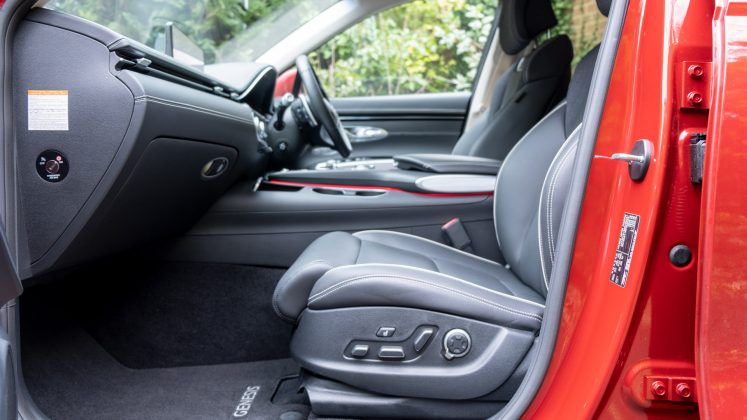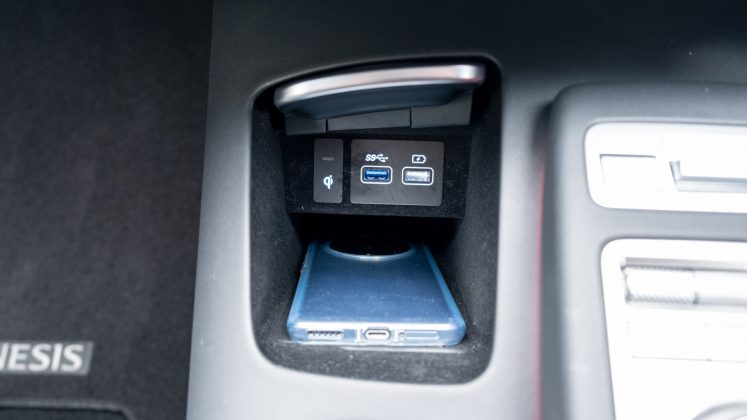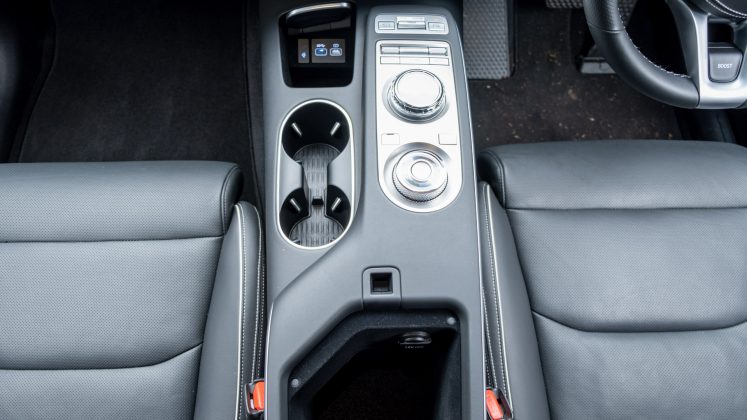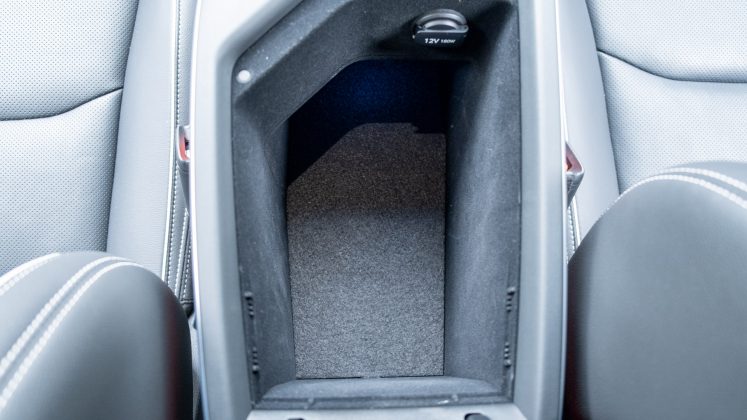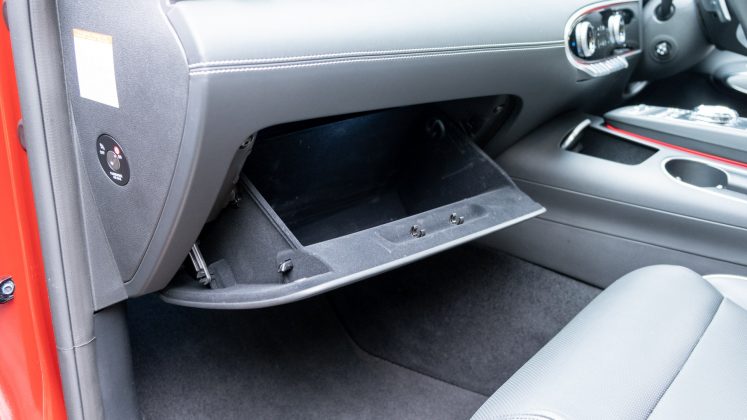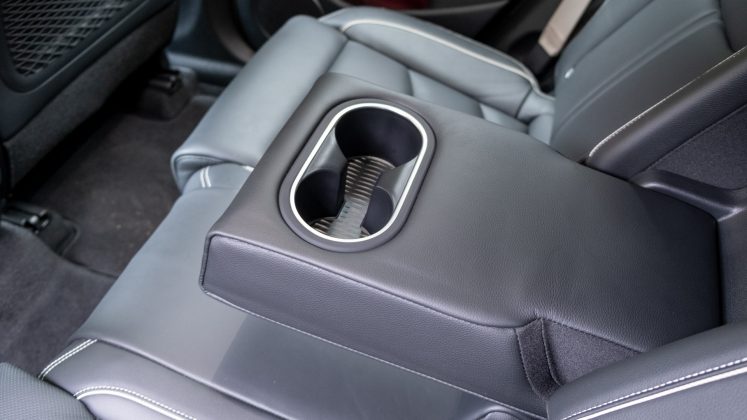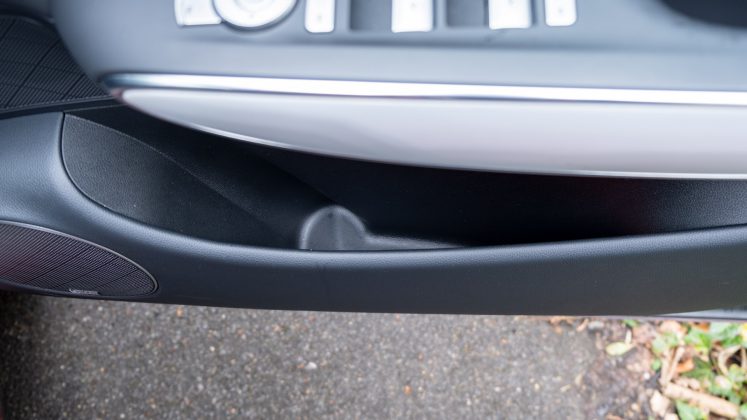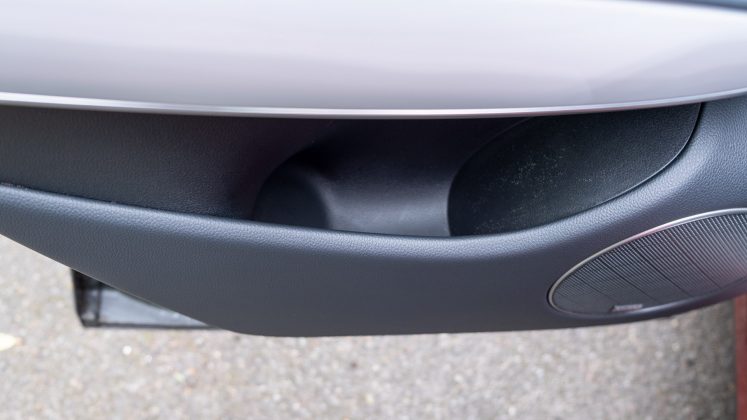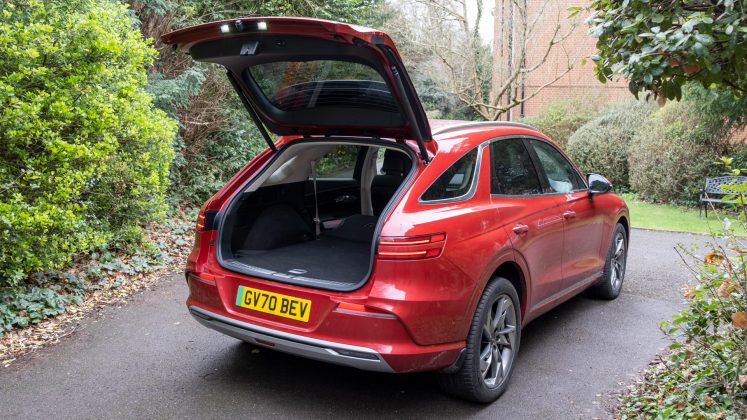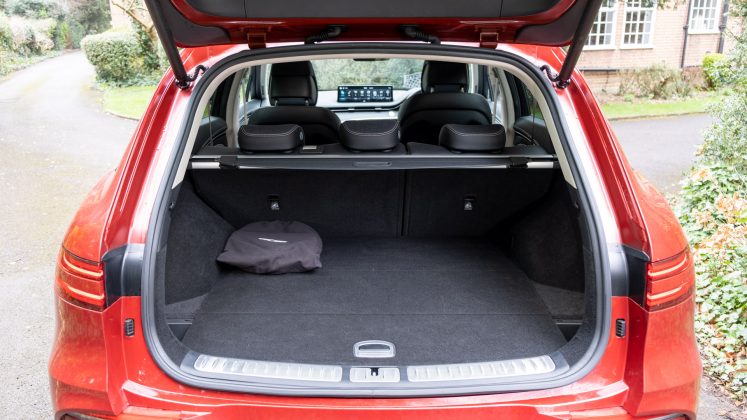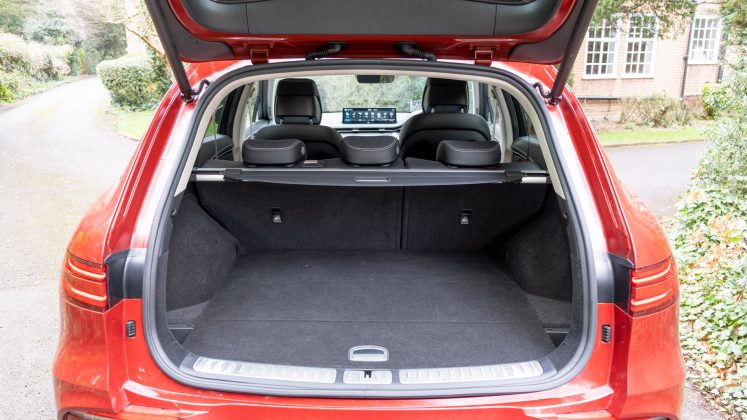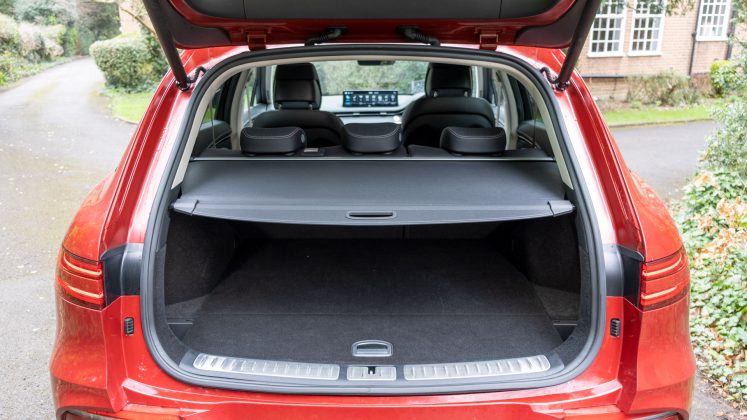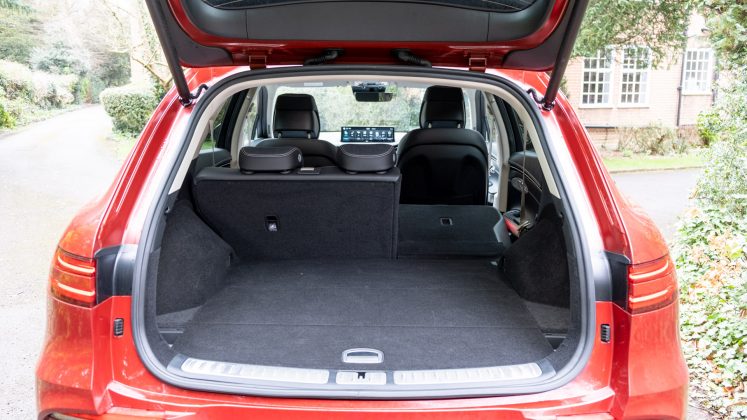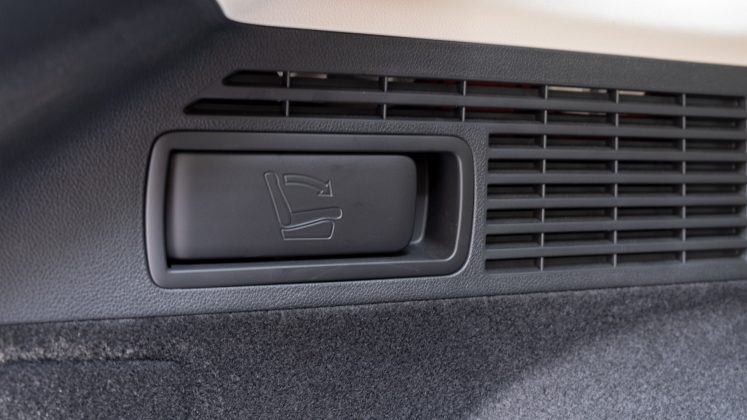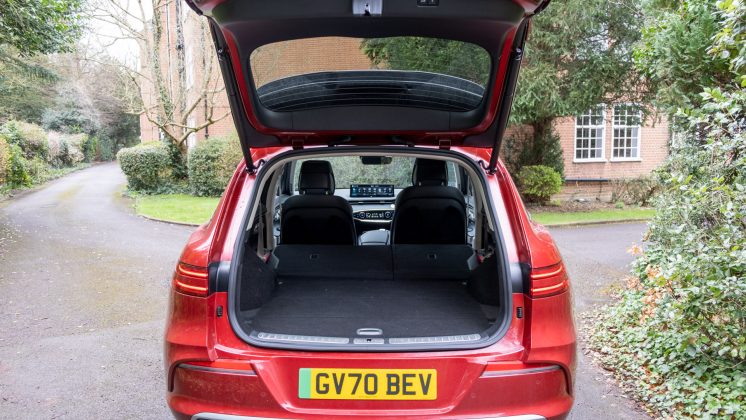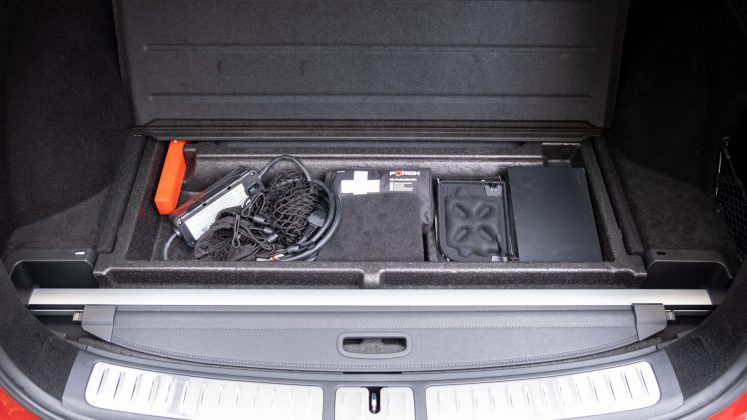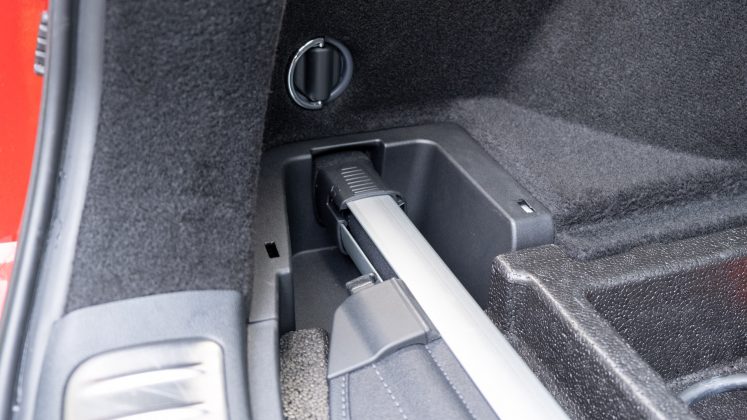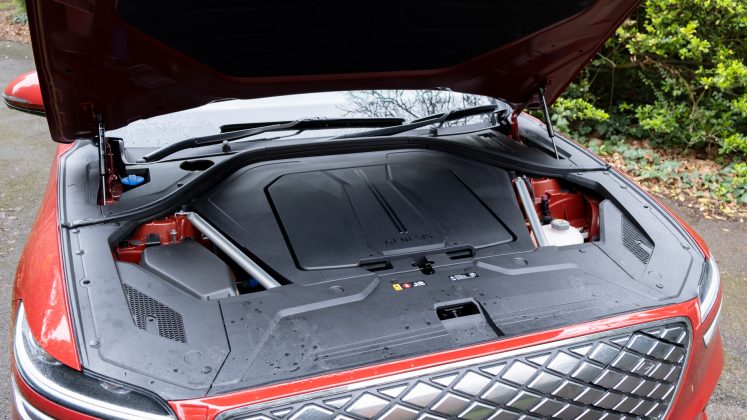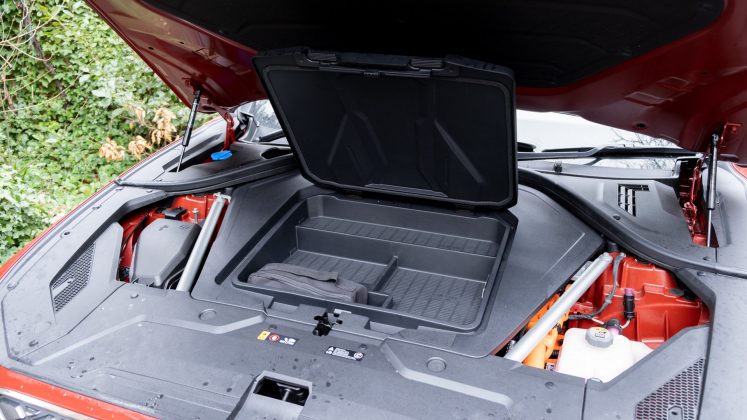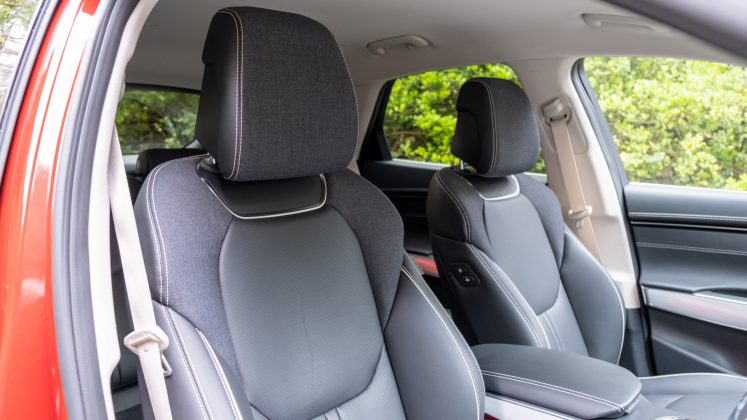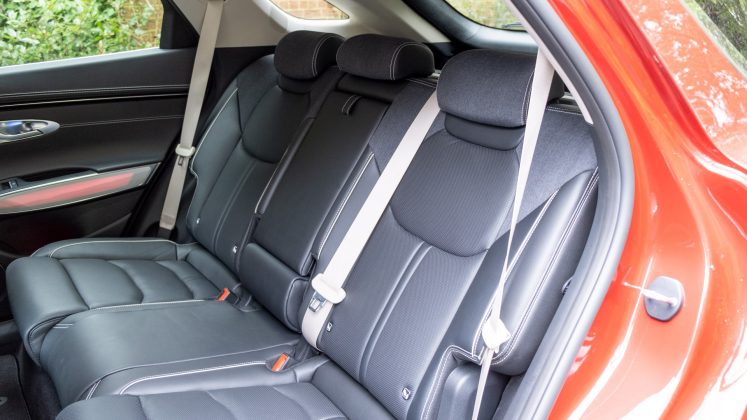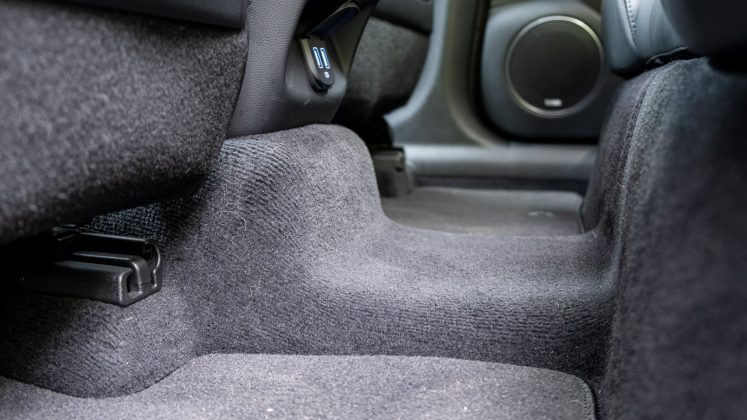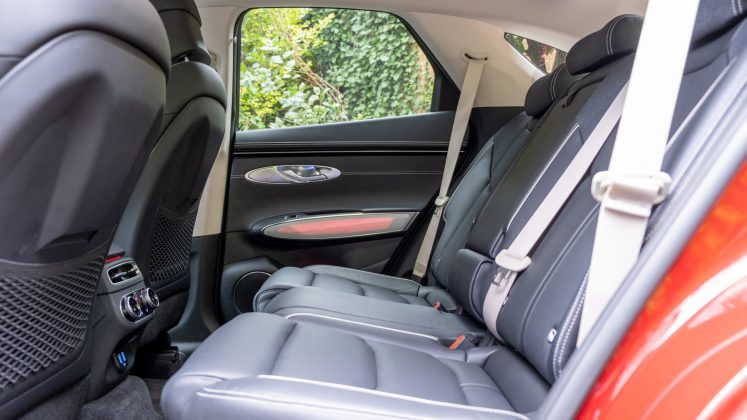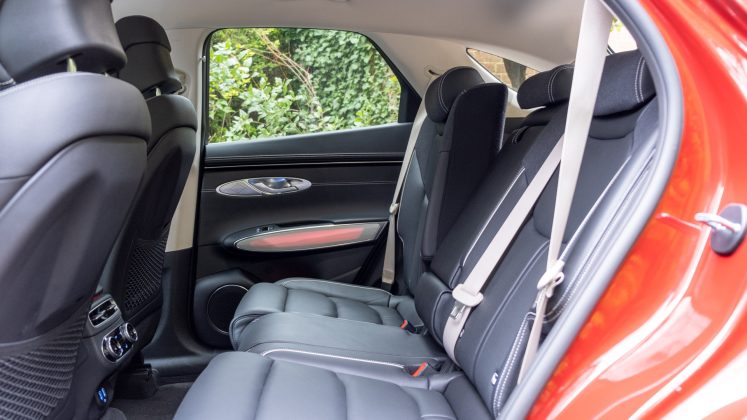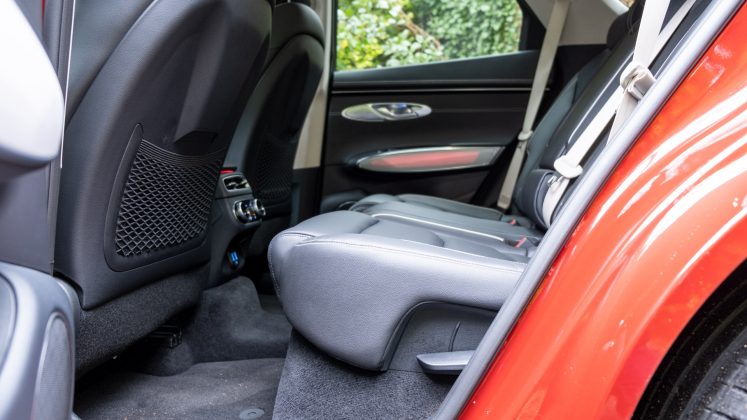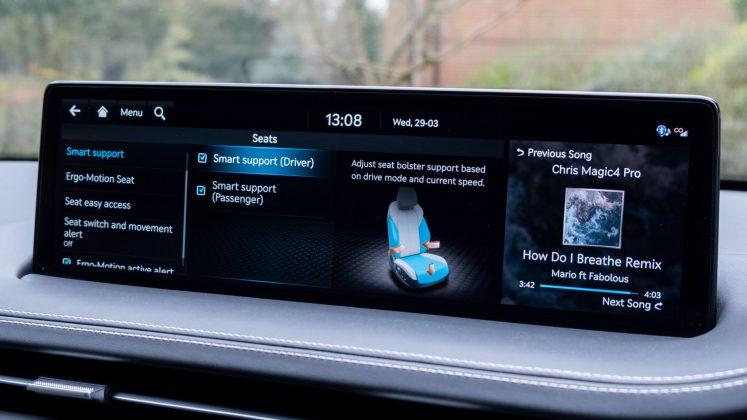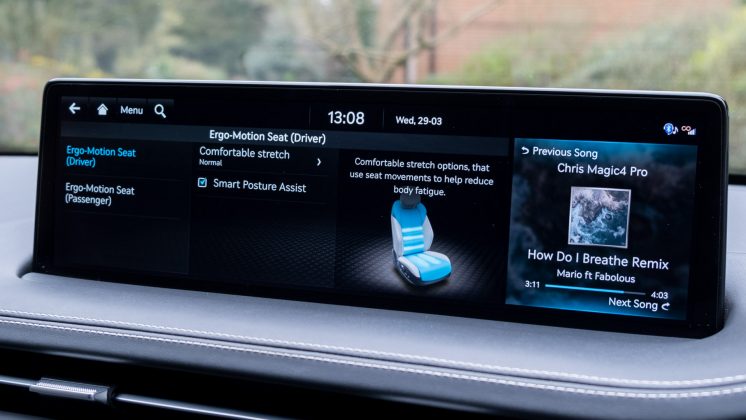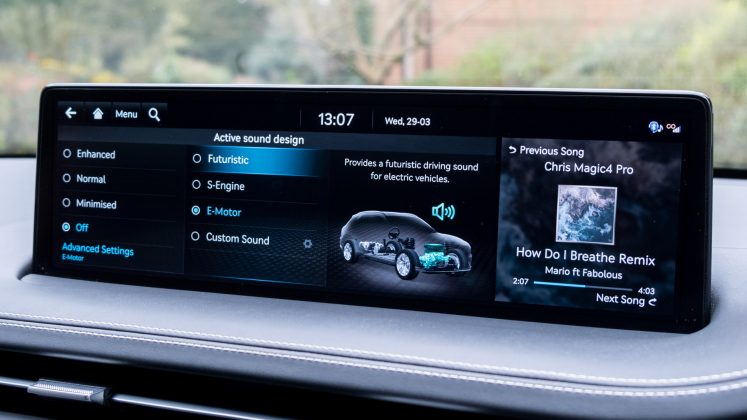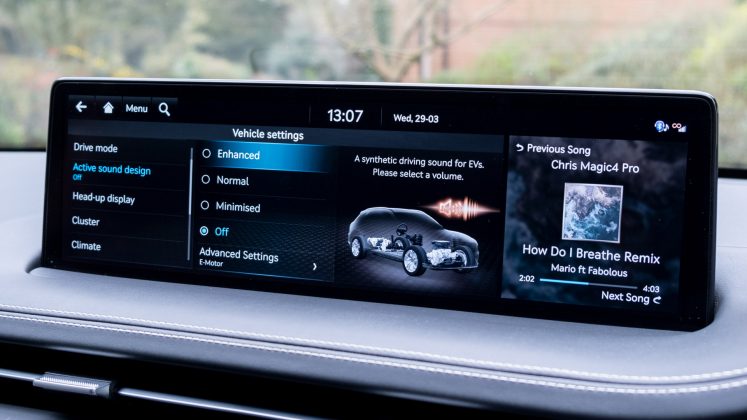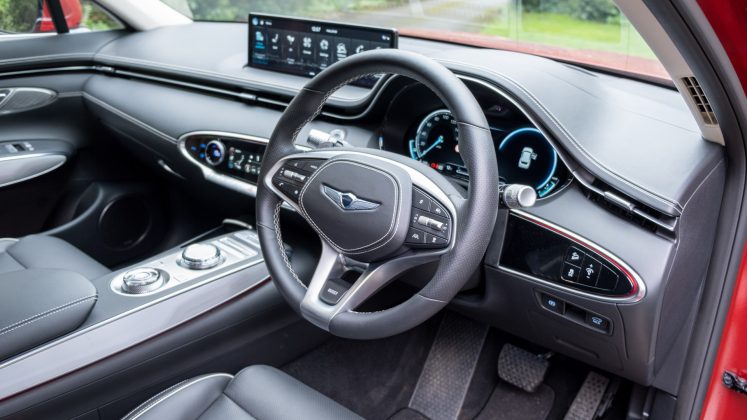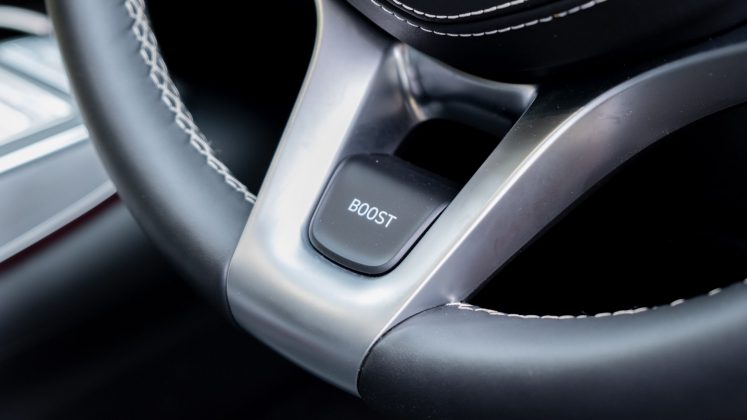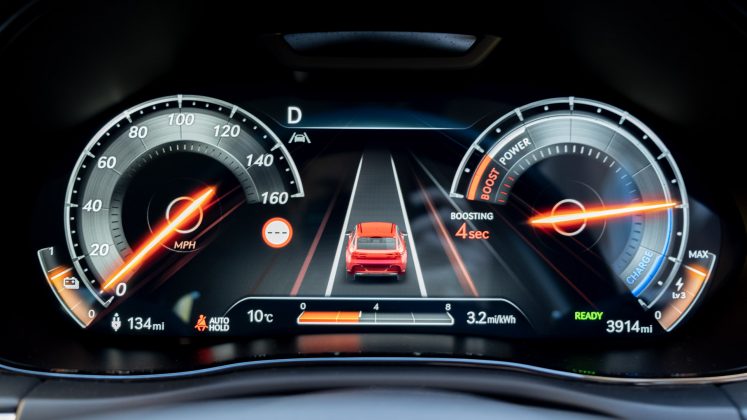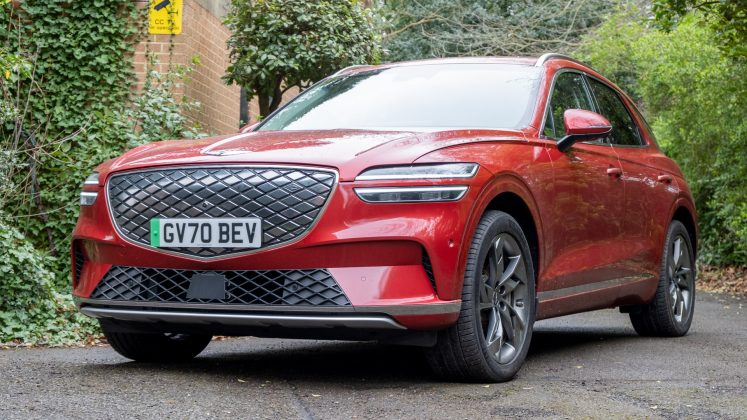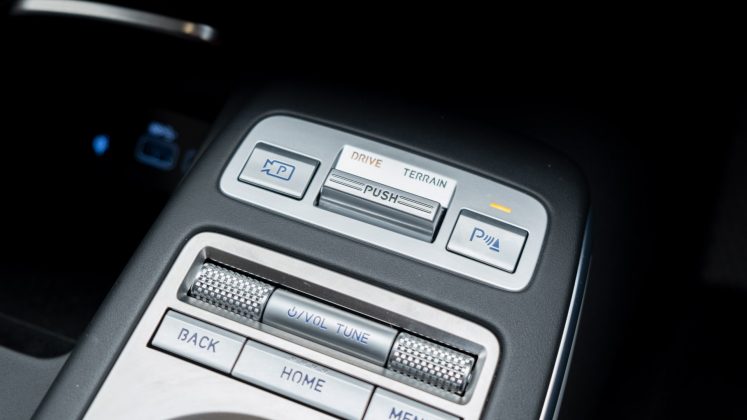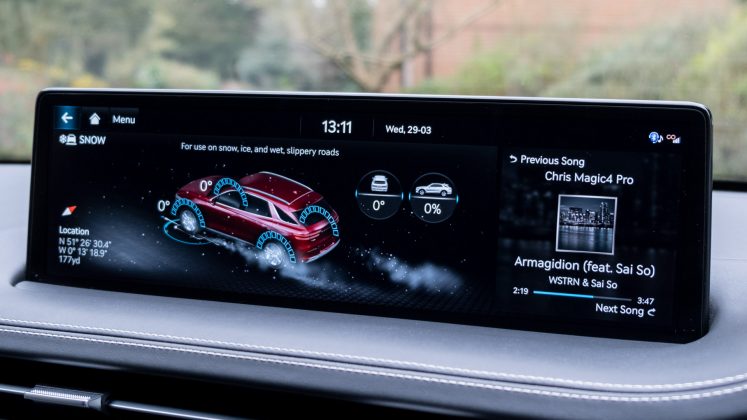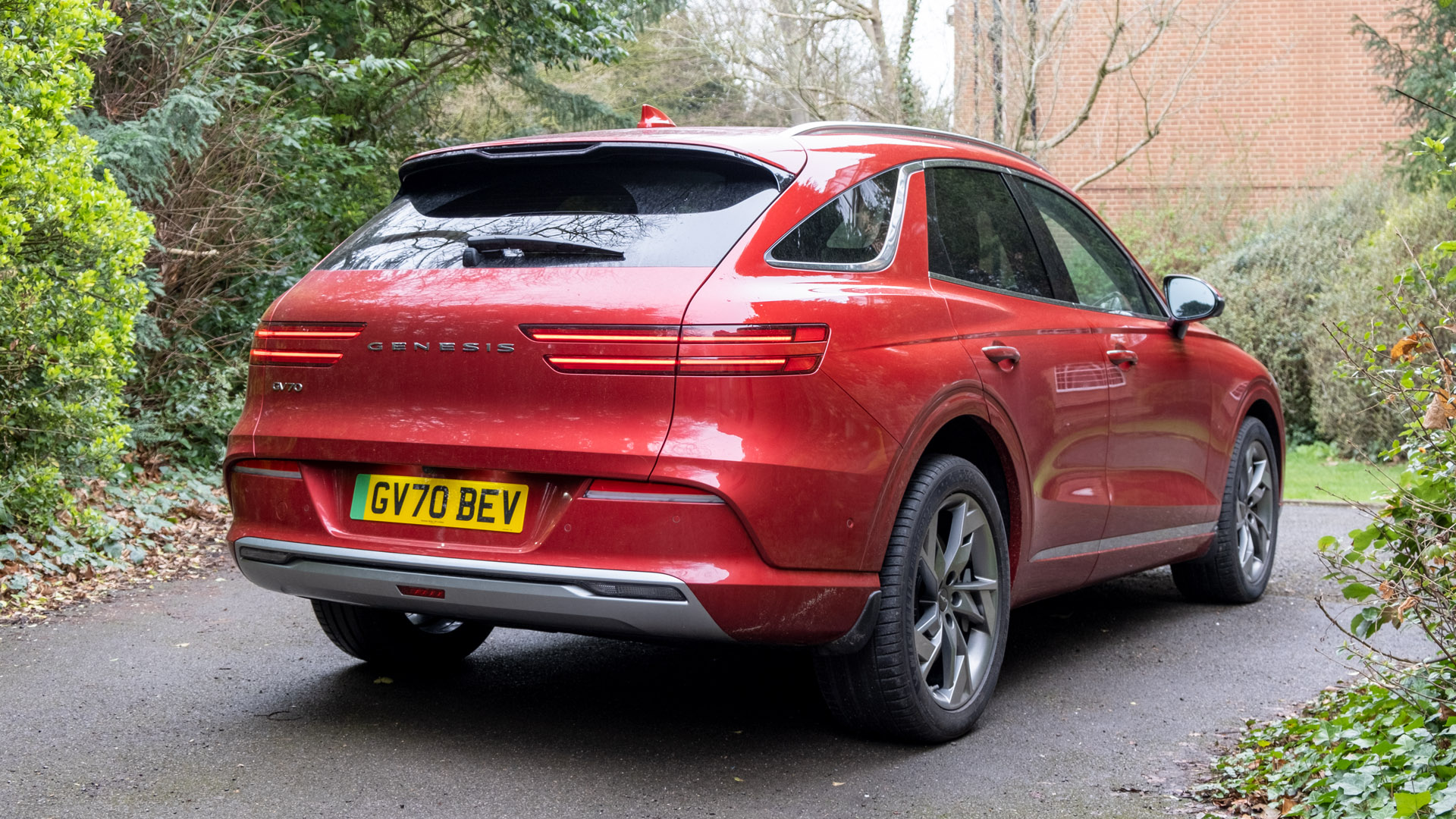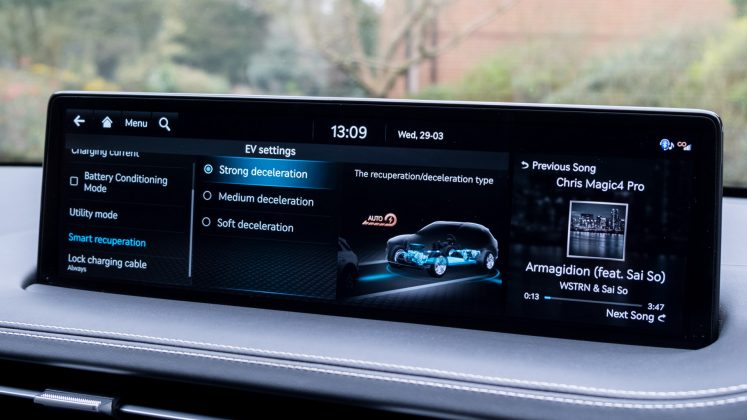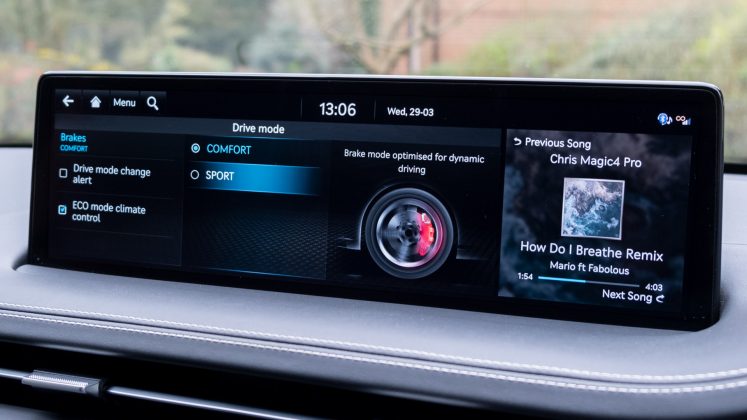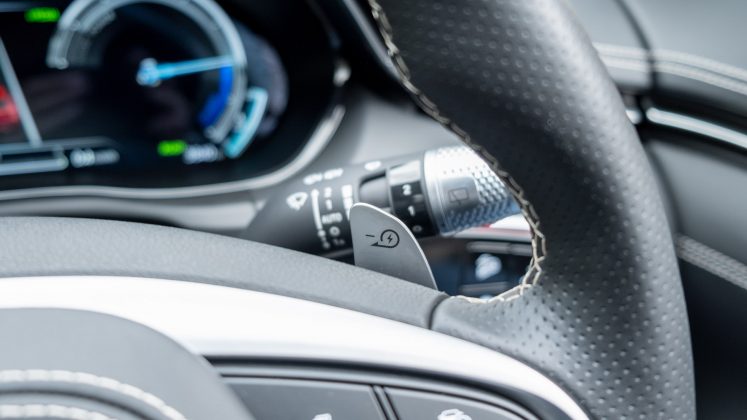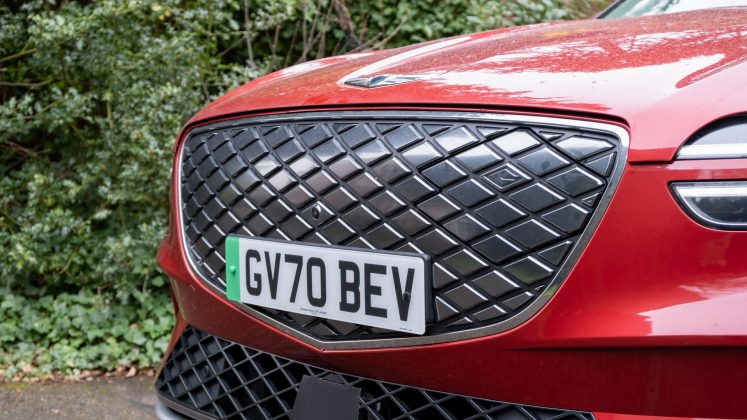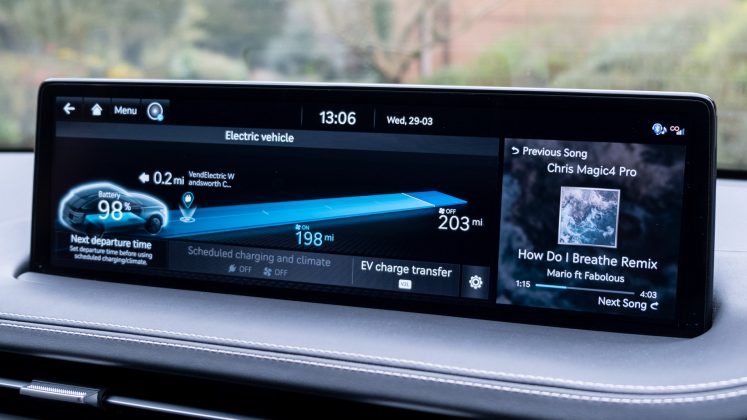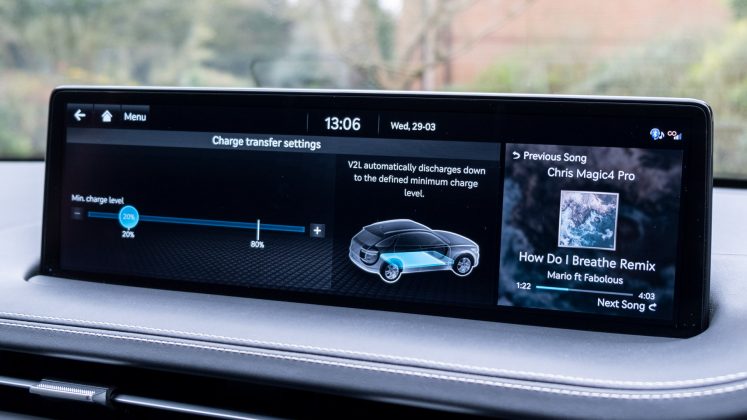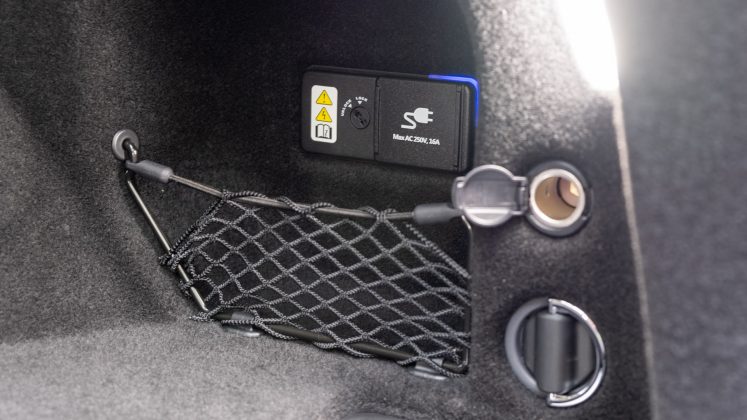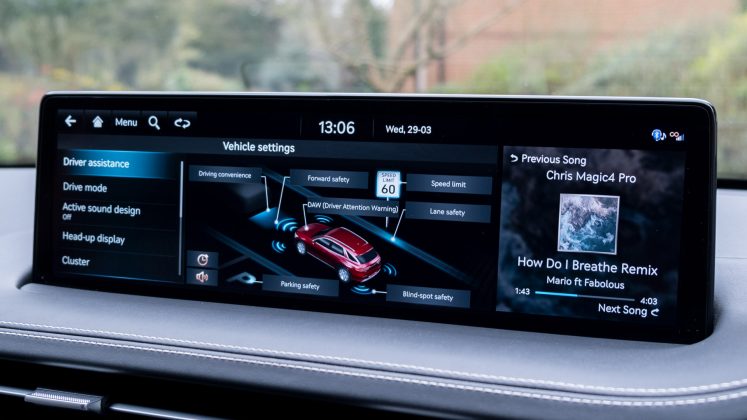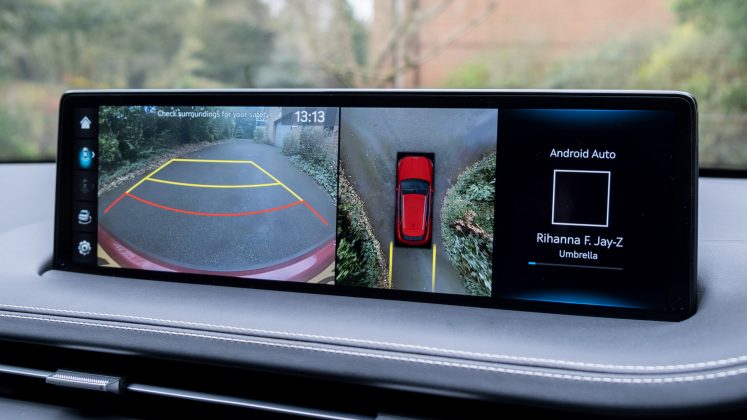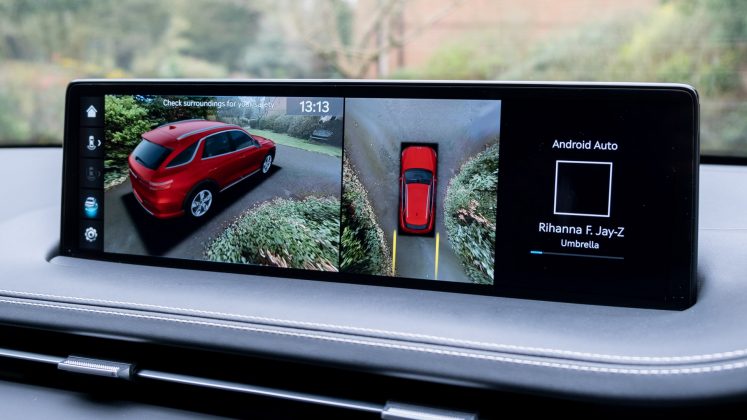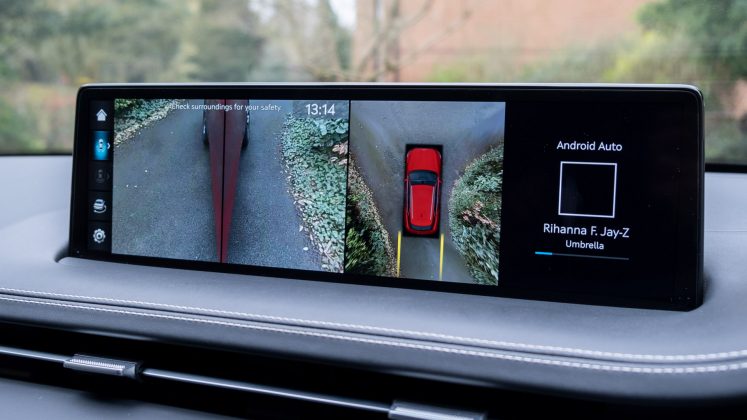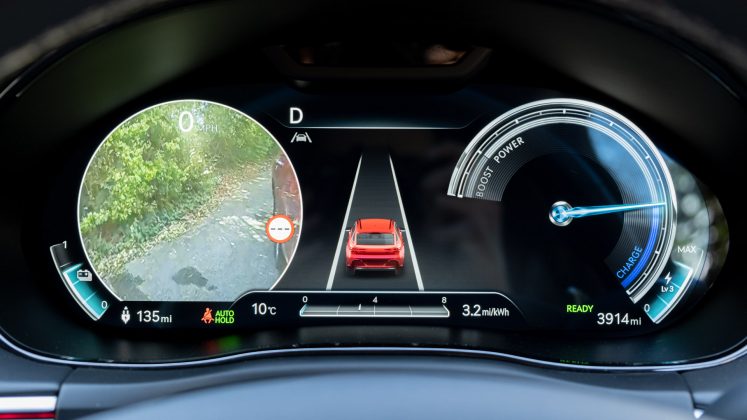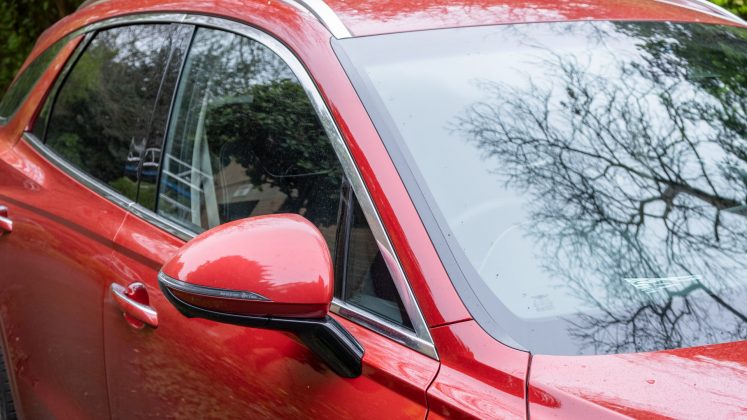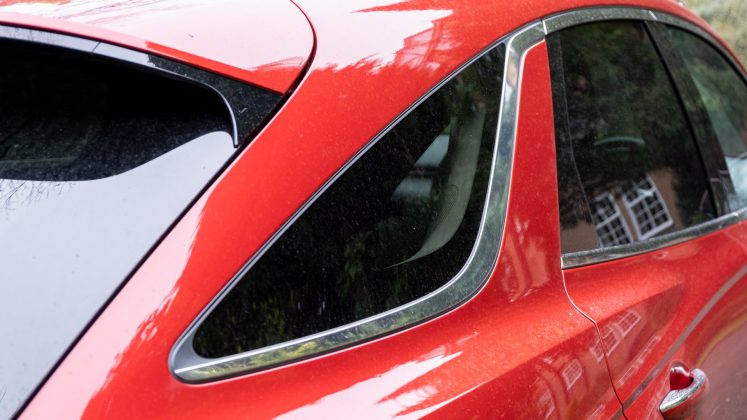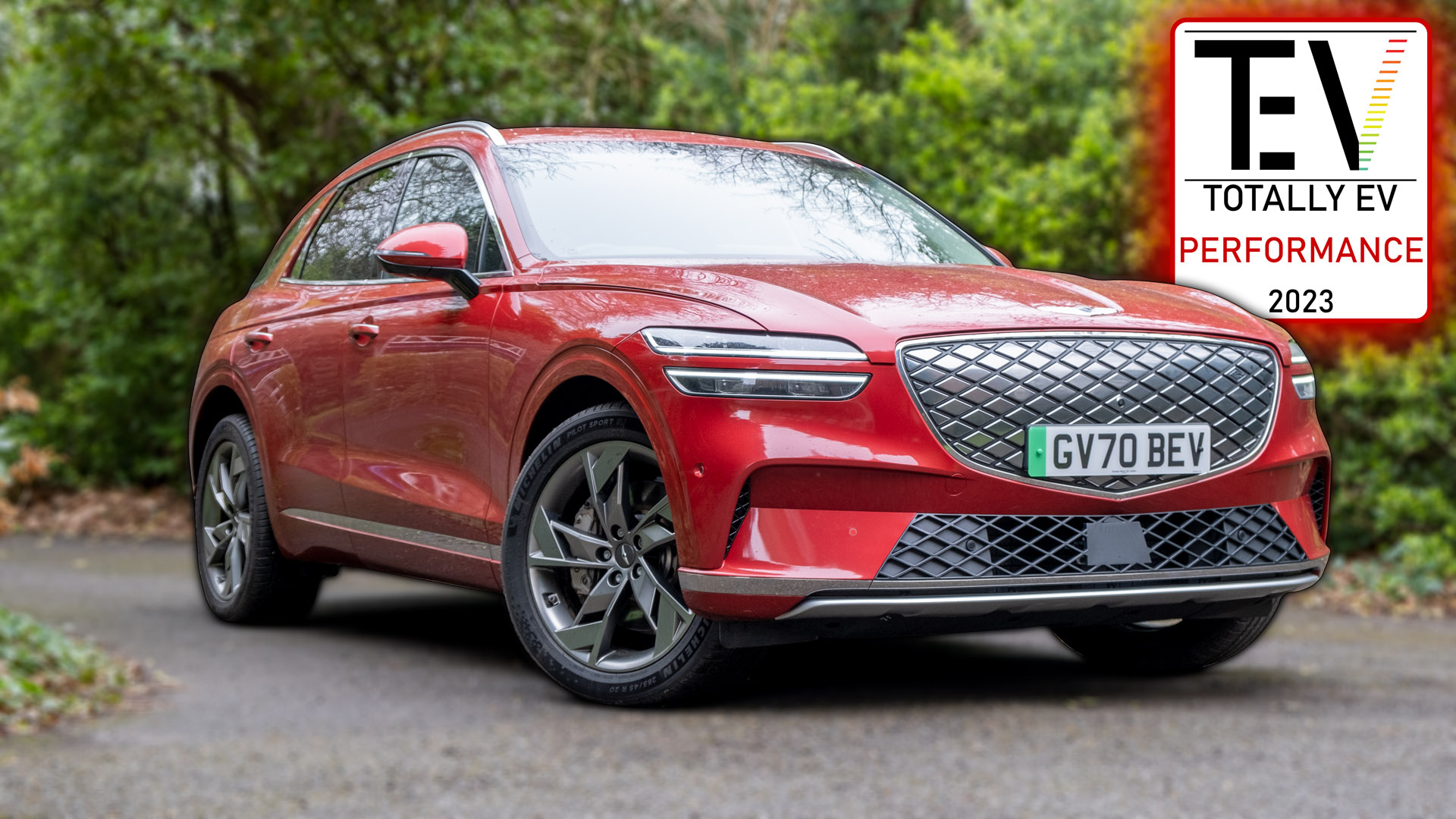Formed in 2015, Genesis is the luxury vehicle division within the Hyundai Group. The Korean automaker recently entered the UK and European markets in order to compete with premium offerings from rival automakers.
The Genesis GV70 is a prime example of it, with the lavish SUV being likened to an Audi, BMW and even a Bentley. In the UK, the GV70 is available with a petrol and fully electric powertrain, with the latter denoted by the ‘Electrified’ branding.
If you’d prefer to watch a review of the Genesis Electrified GV70, head on over to our YouTube channel.
Genesis GV70 price & competition
Concentrating on the EV model, it’s solely available in a single trim level, at least at the time of writing. The Sport trim costs £64,409 without options, a breakdown of the standard equipment and extras can be found below (click to expand):
Find the best Genesis GV70 deals
As for the competition, there are numerous premium all-electric SUVs to consider: the Skoda Enyaq iV 80x from £51,275; the Volkswagen ID.4 GTX from £51,580; the Kia EV6 GT-Line AWD from £51,595; the Hyundai Ioniq 5 AWD Ultimate from £51,900; the Tesla Model Y Long Range from £52,990; the Mercedes EQA 350 4MATIC from £53,010; the Audi Q4 50 e-tron from £55,310; the Volvo XC40 Recharge Twin from £56,150; the BMW iX3 from £62,865; the Jaguar I-Pace from £66,350; the Mercedes EQC 400 4MATIC from £70,035; the Ford Mustang Mach-E GT from £72,830; the Audi e-tron S from £88,435; the Tesla Model X at an estimated £102,980; and the BMW iX xDrive50 M Sport from £107,305.
Read next: Kia Niro EV review: An upgraded e-Niro?
Genesis GV70 exterior review
Very much like its similarly-priced competitors, the GV70 looks the part. In our opinion, it’s stylish from every angle; from its curved front and rear profiles to its sporty-looking side design. Here, you will find 19” alloys fitted as standard or for an additional £630 one can up the ante to the pictured 20” rims.
In terms of your colour options, a solid white comes as standard, while the metallic finishes will set you back an additional £750 and the matte £1,130. As for its roof load capacity, it’s rated at 100kg on the Electrified GV70, with its towing capacity at 750kg and 1,800kg for a braked and unbraked trailer, respectively.
Read next: Citroen e-C4 review: Most comfortable SUV?
Genesis GV70 interior review
Inside the cabin, it’s also rather dashing. The Electrified GV70 has leather and wool woven seat covers, with a premium-looking leather dashboard and door frames. Should you want an even more lavish design, you can get Nappa leather seats for an additional £2,350. LED mood lighting can be found on each of the four doors too, but for £120 you can opt a brushed aluminium design instead.
What’s more, is that the manufacturer has retained practicality by not eradicating all physical controls. Indeed, it’s far more intuitive to interact with the instrument cluster, infotainment system and to adjust the climate. With that said, the latter is partly digitalised, with fan speed and dispersion of air touch-based; nonetheless, the small display is very responsive and with physical dials on either side, it’s still quick and easy to adjust the temperature.
As for the infotainment system, the rotary dial that awkwardly resides just above the similarly-shaped gear selector on the centre console provides a means of navigating the 14.5” display. It’s much-needed, as should you want to reach toward the display, it’s at a bit of a stretch.
Read next: Tesla Model Y review: Best electric SUV?
No matter your choice of input, responsiveness and the layout of the infotainment system are both excellent. In fact, the level of customisation and the countless settings on offer might be off-putting at first glance but it’s easy to get accustomed thanks to the intuitive menu system. Android Auto and Apple CarPlay are both supported over a wired connection. It is a shame, however, that the GV70’s instrument cluster and HUD do not feed through navigation data from these third-party mobile operating systems.
Speaking of which, there’s an 8” display fitted as standard in front of the driver but within the Innovation Pack, which will set you back a whopping £3,560, you’ll get a larger 12.3” panel with a 3D effect. You can alter the 3D projection through the infotainment system, or opt for a more traditional 2D design too. The expensive pack also adds a Head-Up Display (HUD), which projects important driving information on the windscreen, allowing you to keep your eyes planted on the road. On that note, the Innovation Pack also adds a flurry of driver assistance systems, which we’ll get into further down in this review.
An option you might want to seriously consider, however, is the £990 Lexicon Audio System. This upgrades the stock nine-speaker system to a punchy 15-speaker configuration, which we’d recommend especially if you or your passengers enjoy listening to music. You can hear how the upgraded system performs by watching our dedicated audio review on YouTube.
Genesis GV70 storage review
To get the utmost audio quality, you’ll want to plug in your smartphone to one of the two available USB Type-A ports found at the front of the centre console. Here, you’ll also find a Qi wireless charging pad that comes fitted as standard. Your phone can also be concealed from view as there’s a stylish retractable cover. Further down the centre console, there are two cupholders and a sizable area under the centre armrest. There are two further cupholders at the rear of the cabin, which can be revealed within the pull-down armrest.
Elsewhere, there’s a relatively large glove box and door bins. The front two are large enough to accommodate a 500ml bottle and other valuables. It is a shame, however, that the doors are not lined in fabric, which means loose change or keys will be heard rattling around.
Our biggest complaint, however, is that the centre console is far larger than it should be. We suspect this is due to the vehicle sharing a platform with the petrol model. Indeed, in the fully electric market, the centre console takes up a lot of room and as such, doesn’t give the same sense of spaciousness at the front of the cabin as its cheaper siblings, the Hyundai Ioniq 5 and Kia EV6 that have a small and even moveable compartment.
What does stand out is its boot capacity. There’s 503 litres with the seats up, and with them folded flat this figure extends up to 1,678 litres. There’s even a 25-litre at the front of the vehicle, showing that the manufacturer hasn’t been lazy in optimising the Electrified model.
Here is how its rear boot stacks up to its rivals: Tesla Model Y (854/2,100 litres); Audi e-tron S (660/1,725 litres); Skoda Enyaq iV (585/1,710 litres); VW ID.5 (549/1,561 litres); VW ID.4 (543/1,575 litres); Hyundai Ioniq 5 (520/1,587 litres); BMW iX3 (520/1,560 litres); Jaguar I-Pace (656/1,453 litres); Audi Q4 e-tron (520/1,490 litres); Kia EV6 (490/1,300 litres); Volvo XC40 Recharge Twin (452/1,328 litres); Ford Mustang Mach-E (402/1,420 litres); and Mercedes EQA (340/1,320 litres).
When it comes to convenience, there’s an electric tailgate that comes fitted as standard with a small button located under the rear wiper to initiate it, 60:40 rear-split folding seats that can be dropped conveniently via the release latch at the rear of the vehicle, a 12V socket, a flat loading bay and a large underfloor compartment that can accommodate the vehicle’s charging cables and even the retractable boot load cover. Clever thinking from the manufacturer, as most of its rivals require you to store said contraption at home or somewhere else within the vehicle.
Read next: Skoda Enyaq iV review: The Volkswagen ID.4 alternative
Genesis GV70 comfort review
The Electrified GV70 is not only practical but also very comfortable. All seats are accommodating and soft, with the rear two also offering excellent headroom and legroom for 6-foot 2-inches (188cm) individuals. Better still, the rear seats can recline, and despite being based on the petrol model, the transmission tunnel has been reduced to provide those sitting at the back with even bettered comfort. Yet again, kudos to the automaker, which has optimised the fully electric version.
At the front, the seats are electric as standard, however, disappointingly if you’d like heated seats and a steering wheel you’ll have to spend an additional £1,180 on the Convenient Seat Pack. This also adds rear air conditioning and a premium cabin filter. Heated rear seats are also only available in the 2nd Row Comfort Seat Pack, which costs an additional £600. In this pack, you’ll also find door curtains and laminated rear glass.
Find the best Genesis GV70 deals
Going a step further, there’s the Comfort Seat Pack at £1,630. This brings the fantastic ergo motion seats, helping you relax while on the move, front electric cushion and support, with ventilated seats too. On the subject of your options, there’s the Sunroof Pack at £1,460; great for bringing additional light within the cabin.
As for cabin noise, it’s kept down to a minimum with exterior noise suppressed even at higher speeds. This is thanks to laminated front side windows, an acoustic film fitted on the windscreen and active road noise cancellation all included as standard. It outclasses some of its competitors in this department and provides a serene environment – more details and our in-cabin measurements can be found in our dedicated audio review.
However, what we aren’t fond of is the Active Sound Design, which projects artificial engine or EV sound through the speaker system. Thankfully, it can be fully disabled through the infotainment system so that you can relax within the vehicle’s quiet cabin.
Read next: Kia EV6 review: The Hyundai Ioniq 5 alternative
Genesis GV70 performance review
Another quirk is that the automaker has opted for an electronically controlled suspension system, which uses the front camera to adapt the damping force while on the move. It does a competent job of analysing the road and making the GV70 comfortable to drive on challenging routes. However, it won’t compete with the adaptive air suspension systems of the likes of Audi and Citroen, which operate mechanically to provide you with a smoother driving experience.
Speaking of which, the Sport driving mode stiffens the suspension system to provide you with a heightened feel while cornering and reduces body roll. Unsurprisingly in said mode, you will incur a more unsettled experience, as you will feel more of the anomalies on the road. Despite the addition of Sport mode, the Electrified GV70 doesn’t provide the same driver’s feel as the BMW iX3 or Jaguar I-Pace, which reign supreme in this department. Indeed, the Genesis’ steering input feels a little disjointed.
With that said, it’s no slouch. Its dual motors output 180 kW each, which means you’ve got a total of 360 kW (483 hp) and a whopping 700 Nm of readily available torque. Putting your foot down to the metal will fling your head back into the headrest. We had it tested using Racelogic’s Performance Box Touch from 0-20mph in 1.49 seconds, 0-30mph in 2.16 seconds; 0-60mph in 4.3 seconds and from 50-70mph in 1.95 seconds. While it won’t quite match the tri-motor Audi e-tron S, which clocked a 0-60mph time of just 4.01 seconds, the Genesis still provides one of the most exhilarating straight-line performances one can attain in an electric SUV.
These times were attained with Boost mode enabled. This 10-second burst of power is initiated by pressing the appropriately labelled button found at the bottom of the steering wheel – it effectively gives you the full whack of power, be it from a standstill or while on the move. Without it, the SUV is 0.2-0.4 seconds lower in achieving the target speed, so it’s still very punchy. As for top speed, it’ll get up to 146mph, which is great to see in a fully electric SUV, as most are severely restricted.
Aside from this, the grip levels and traction of the Electrified GV70 are both excellent. Due to it operating on an all-wheel drive (AWD) configuration at all times, it provides a good degree of confidence when cornering at speed. Better still, it has Snow, Mud and Sand modes, giving you a tailored driving profile to adapt to the different terrain types.
Read next: Volkswagen ID.5 review: Germany’s best electric SUV?
What isn’t as impressive, however, is its electric driving range. In our mixed driving tests, we netted 200-220 miles from its 77.4 kWh battery pack. Note, that a heat pump comes fitted as standard. Granted it’s tested range isn’t too shabby, but given Hyundai Group’s excellent pedigree in this department, we expected a better result.
Nonetheless, to put things into perspective, here’s how it stacks up to its rivals: the VW ID.5 clocked in an impressive 325 miles; the Skoda Enyaq iV 80 300 miles; the Tesla Model Y Long Range 260-280 miles; the Audi Q4 e-tron and Volkswagen ID.4 attain roughly 260 miles; the Kia EV6 RWD 240-260 miles; the Jaguar I-Pace and Volvo XC40 Recharge Twin both sit around 240-250 miles; the Hyundai Ioniq 5 AWD Ultimate 230-250 miles; the BMW iX3 nets 235 miles; the Mercedes EQA 210-220 miles; the BMW iX xDrive40 M Sport 200-210 miles; Audi e-tron S 190-210 miles; and the Ford Mustang Mach-E 180-200 miles.
Much like every other fully electric vehicle on the market, the Electrified GV70 has the ability to recoup energy back into its battery pack via the use of regenerative braking. However, unlike its competitors, there are different regenerative braking levels to choose from and i-Pedal mode. The latter allows you to bring the vehicle to a complete standstill when lifting off the accelerator pedal. Thus, inner-city drives become less cumbersome as one doesn’t have to resort to using the physical brake pedal when decelerating.
While useful, it is a shame that i-Pedal mode isn’t stored within the vehicle’s memory, which means you’ll have to initiate it each time you step inside the cabin. Thankfully, this can easily be rectified in a few seconds by flicking on the left flappy paddle. Here, you’ll also find a few other regenerative braking levels: 1, 2, and 3; you can also access Auto mode by holding the right flappy paddle for a few seconds. In Auto mode, the vehicle will decelerate when lifting off the accelerator pedal based on your preferred setting chosen in the infotainment system. Here, you can pick from: Strong, Medium and Soft, which in essence correspond with the same amount of deceleration as Level 3, 2 and 1 manual modes, respectively.
Buy a car phone mount on Amazon (Affiliate)
To recharge at a much more rapid rate, there’s a CCS and Type 2 port, which are stylishly hidden under a flush flap located at the front of the vehicle. The Electrified GV70 can take an impressive 240 kW via the former input. Meaning a 10-80% charge will take just 18 minutes. These high-speed chargers aren’t that common, so on a 50 kW input, it’ll take 73 minutes, instead. Connected to an AC charger, it’ll take 7hrs20mins on a three-phase 11 kW charger and 34hrs 20mins on a regular 3-pin socket.
Elsewhere, there is support for Vehicle-to-Load (V2L) charging, which costs an additional £880. Here, via an adapter plugged into the Type 2 port or the three-pin socket in the boot, you can discharge the vehicle at a rate of 3.6 kW, which is enough to power household appliances. Useful if you go camping, as you can plug in a light or pop on the kettle.
Read next: Audi e-tron S review: The tri-motor electric SUV
Genesis GV70 safety review
In terms of safety, the petrol GV70 scored 5/5 stars on Euro NCAP’s rigorous crash tests. Managing 89% in Adult Occupancy, 87% in Child Occupancy, and 87% in the Safety Assist tests. One can only assume the Electrified model would fair similarly.
While that’s a presumption, we can certify the driver assistance systems. As standard, you’ll find: HDA (Highway Driving Assist), SCC (Smart Cruise Control) with stop & start, LFA (Lane Following Assist), Rear BCA (Blind-spot Collision-avoidance Assist), FCA (Forward Collision-avoidance Assist) (car/pedestrian/bicycle), ISLA (Intelligent Speed Limit Assist), MSLA (Manual Speed Limit Assist), FCA-J (Forward Collision-avoidance Assist – Junction Turning) and LKA (Lane Keeping Assist).
In our tests, we found the systems worked a treat, namely the smart cruise control that took the stress away from mundane motorway drives and correctly regulated the distance to the leading vehicle. Furthermore, LKA can be temporarily disabled by long-pressing the steering wheel icon located on the right-hand side of the steering wheel. Useful, as LKA gets enabled each time you power on the vehicle, no matter the last-used setting.
Should you want to better the experience, you can opt for the Innovation Pack for £3,560. This will give you Reverse PCA (Parking Collision-avoidance Assist), Dual front LED headlamps (low & high projection) with adaptive driving beam, FCA-JX (Forward Collision-avoidance Assist – Junction turning & crossing), Rear seat alert (with sensor), BVM (Blind-spot View Monitor), HDA II (Highway Drive Assist), RSPA (Remote Smart Parking Assist) and SVM (Surround View Monitor).
BVM is an excellent inclusion and uses side-mounted cameras to act as a blind-spot monitoring system. You’ll be able to see your surroundings as you indicate via the instrument cluster – an excellent inclusion, which we’ve seen previously on Hyundai and Kia vehicles.
This brings us to visibility and parking. The GV70 is easy to manoeuvre thanks to its 11.5-metre turning circle. There are no issues when looking towards the front, side or rear of the vehicle either. There’s also a rear wiper, front and rear parking sensors, and a high-resolution rearview camera making it easy to check your surroundings.
Read next: Jaguar I-Pace review: Better than newer rivals?
TotallyEV’s verdict on the Genesis GV70
On the whole, the Genesis Electrified GV70 is an accomplished all-electric vehicle that undercuts a few of its rivals: it’s lavish both inside and out, has a multitude of driver assistance systems built-in as standard, practical with its boot capacity, has plenty of useful tech within the cabin and of course, has an extremely punchy dual-motor configuration. As a result, it receives TotallyEV’s Performance award.
Find the best Genesis GV70 deals
With that said, it’s worth considering a few of the alternatives out there, as the vehicle’s electric range is a little limited, albeit still fares well compared to a few of its dual-motor rivals.
Would the Electrified GV70’s 200-mile range suffice for your needs? Let us know in the comments section below or via social media; we’re on: YouTube, Instagram, Facebook, Twitter and LinkedIn.

